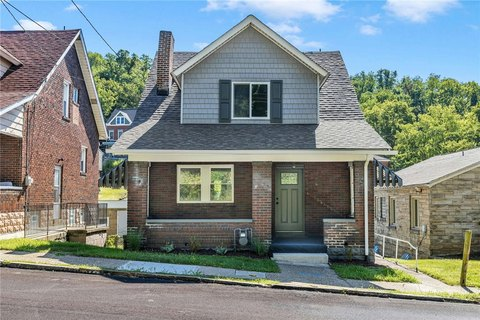In the heart of Hazelwood, Pittsburgh, lies a community where homes stand as a testament to history and resilience in the face of changing climates. As the seasons shift and the elements test the endurance of these residences, one crucial element plays a vital role in safeguarding these homes: the roof.
Your roof is not just a capstone of your house; it's a shield that protects your home and family. Choosing the right roofing material is essential, especially in a city like Pittsburgh, known for its varying climate conditions. Let's delve into some of the most durable roofing materials suitable for the charming homes of Hazelwood.
1. Slate Roofing

Alt: Slate Roofing
Slate roofing embodies elegance and resilience. Its natural durability allows it to withstand Pittsburgh's notorious weather fluctuations, from scorching summers to frigid winters. While it may require a higher initial investment, the longevity of slate roofing makes it a cost-effective choice in the long run. Its timeless appeal adds a touch of sophistication to the homes in Hazelwood.
2. Metal Roofing
Metal roofing has gained popularity for its exceptional durability and energy-efficient properties. In a neighborhood like Hazelwood, where heavy snowfall and intense sunshine are common occurrences, metal roofs offer excellent protection against the elements. With proper installation, metal roofing can last upwards of 50 years, making it a sustainable choice for homeowners looking for longevity and style.
3. Asphalt Shingles
While asphalt shingles may be a more common roofing material, they are popular for a reason. Their affordability and versatility make them a practical choice for many homeowners in Hazelwood. Modern asphalt shingles are designed to withstand harsh weather conditions and provide adequate protection for decades. With a wide range of colors and styles available, asphalt shingles offer flexibility without compromising on durability.
4. Clay Tiles
Clay tiles exude a unique charm that complements the historic homes of Hazelwood. Beyond their aesthetic appeal, clay tiles are exceptionally durable and well-suited to Pittsburgh's climate. They are resistant to fire, insects, and rot, making them a low-maintenance roofing option for homeowners seeking both durability and visual appeal. While clay tiles may have a higher upfront cost, their longevity and classic look make them a worthwhile investment.
5. Green Roofs

Alt: Green Roofs
For eco-conscious homeowners in Hazelwood, green roofs offer a sustainable and durable roofing solution. By incorporating a layer of vegetation on the roof, green roofs provide natural insulation, reduce energy costs, and promote biodiversity. In addition to their environmental benefits, green roofs have excellent water retention properties, which can be particularly advantageous in areas with fluctuating precipitation levels like Pittsburgh.
In Conclusion
Choosing the right roofing material for your home in Hazelwood is a decision that should not be taken lightly. Each roofing material offers a unique set of benefits, from durability to aesthetics, catering to the diverse needs of homeowners in the community. Whether you opt for the timeless elegance of slate, the modern efficiency of metal, or the classic appeal of clay tiles, investing in a durable roof is an investment in the longevity and resilience of your home.
May your Hazelwood home stand strong against the winds of change, sheltered by a roof that embodies durability and beauty.
Remember, a roof is not just a covering – it's a symbol of protection and strength for your cherished abode.
